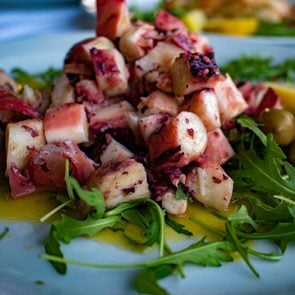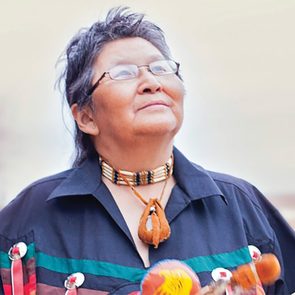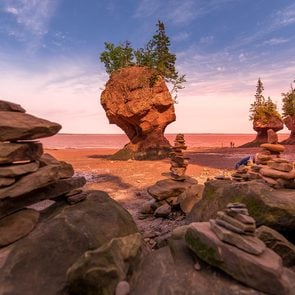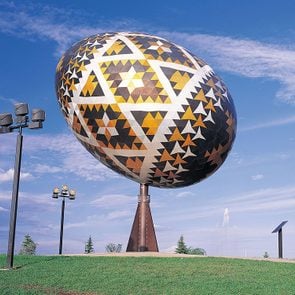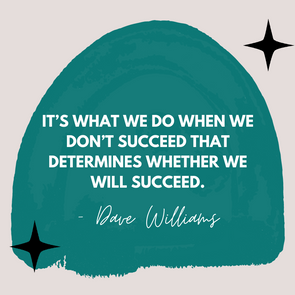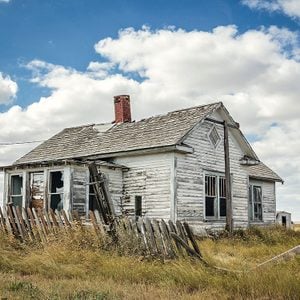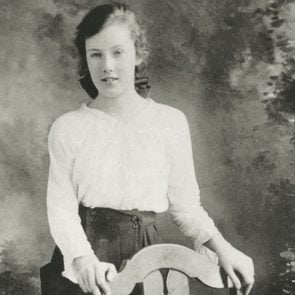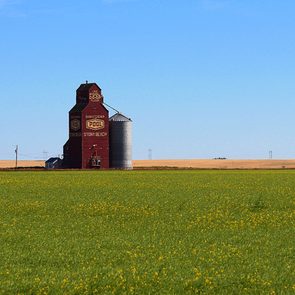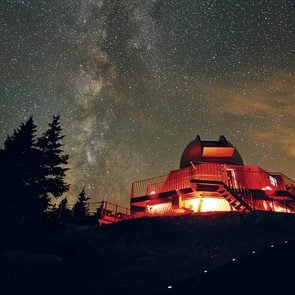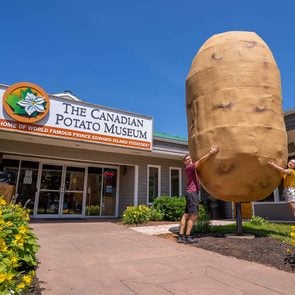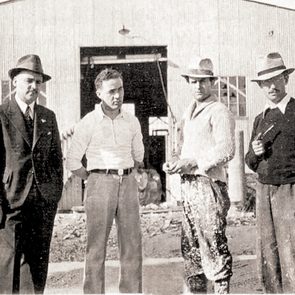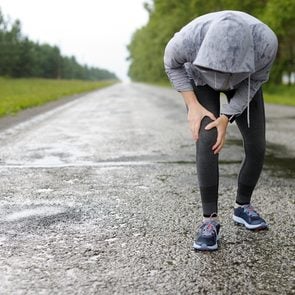
A royal reputation
Americans alone eat some 50 billion hamburgers each year, but “burgernomics” are international: The Economist magazine uses its Big Mac index to compare the purchasing power of various nations’ currencies based on the price of the McDonald’s staple, with the U.S. price serving as a baseline. (In 2022, for example, the priciest Big Mac among 58 countries was in Switzerland, US$6.71; the cheapest was in Venezuela, US$1.76. The U.S. price was $5.81.)
The hamburger origin story
While both the Roman and Mongol empires enjoyed early versions of what we call hamburger meat, it came to be associated with the German city that would ultimately give it its name in the 18th and 19th centuries: Hamburg.
A 1747 English cookbook had a recipe for “Hamburg sausage” made with minced beef. And by the start of the 19th century, German emigrants sailing from Hamburg, a major port, took with them cakes of salted beefsteak as sustenance for their long sea voyage to the New World. The salting helped preserve it for the journey, and it could be eaten without the need for utensils.
Americans originally called the dish “Hamburg steak,” and, eventually, “hamburger.” It’s still not known for sure who can be credited as being the first to “invent” the sandwich. In 1885, both “Hamburger Charlie” Nagreen of Seymour, Wisconsin, and the Menches brothers of (fittingly) Hamburg, New York, served ground-beef sandwiches at their local fairs.
Meanwhile, Louis’ Lunch in New Haven, Connecticut, claims to be the oldest burger joint in America, serving beef patties between slices of white toast since 1900. And the first burger chain in the U.S. was neither McDonald’s nor Burger King. The craze kicked off in 1921 when Kansas cook Walter Anderson co-founded White Castle.
During both World Wars, the Germanic moniker came to be seen as unpatriotic in America, and some restaurants opted to change the name to “liberty sandwich” or “liberty steak.” That didn’t stick.
Burgers go global
Not everyone considers hamburgers a handheld food. Many around the world prefer to tackle theirs with a fork and knife. Among them: the late Queen Elizabeth II—and some French diners. (There’s even a hyperspecific burger knife made by Wüsthof.)
Today’s variations are just about endless. The beef can be swapped for turkey, bison, squid (popular in Japan) or a portobello mushroom cap. In Australia, beyond typical add-ons like cheese, pickles and ketchup, you can choose a fried-egg topper, and slices of pineapple, pumpkin and beet. In Belgium and the Netherlands there is the Bicky burger, which features a deep-fried patty made with pork, chicken and horse meat.
Considering that burgers are a staple on menus all over the world, it’s no surprise there are so many ways to cook, top and eat this classic.
Now that you know the hamburger origin story, discover the history of gelato, a frozen Italian treat that’s become a global favourite.
There are some things that totally turn me off of food—a dry piece of chicken, too much salt on something, cheese that has been left out of the fridge too long. The same goes for drinks, too. If you’ve ever seen white flakes in water from your tap, you may be inclined to dump it out and buy a bottle of water instead.
Not so fast, though—there are many benefits of drinking water, even when it’s not perfectly clear. The white fragments swirling around in your glass of water don’t mean it’s unsafe to drink!
What are the white flakes in my water?
Next time you fill up a glass of water, take a closer look—if there are white flakes floating around, you probably have hard water. Put simply, your water is nutrient-dense, specifically in calcium. This isn’t necessarily a bad thing, but there are pros and cons to having hard water in your home.
Our diets require minerals like magnesium and calcium, and hard water has high amounts of both. It doesn’t taste like water from a 24-pack of plastic bottles, either—hard water has a little more flavour and taste. Along with the taste comes a stronger smell as well, thanks to the nutrients. It’s been described as an “earthy” scent, which sometimes is comforting. Others have described it as smelling like sulfur or rotten eggs, so it really depends on how hard your water actually is.
While hard water is completely safe to drink, having it running through your house may cause some problems. Because of the high concentration of nutrients and minerals in the water, there’s more likely to be buildup in your pipes and on your faucets. It can also cause water spots on your dishes. Hard water, when used frequently to shower, may dry out hair and skin as well.
Do I have hard or soft water?
Not sure if your water is hard or soft? Here’s a trick that may help you come to a conclusion.
The first thing you’ll want to do is grab a clear water bottle. Fill it up a third of the way with water from your kitchen faucet or bathtub, and then add a small amount of dye-free and perfume-free soap. Shake up the bottle, and then watch it closely. If there is a good amount of bubbles, the kind you would expect from soap, then you most likely have soft water. However, if the concoction has few or no bubbles, then you probably have hard water.
Next, find out how much water you should drink to stay hydrated.
About 55 million people live with dementia worldwide, according to the World Health Organization. What makes this epidemic even scarier is that despite plenty of theories about dementia, no one really knows what causes it. Alzheimer’s is the most common type—according to the Alzheimer’s Association, it accounts for up to 80 percent of cases—including my mother’s. In a twist that’s hard to fathom, my mother’s Alzheimer’s disease was not diagnosed until she had reached the final stages. Part of this was due to her age; she’s only 68. A mere 5 percent of Alzheimer’s patients experience early onset, which is defined as dementia that strikes before age 65. I never suspected my mother was one of them, and that the disease had taken root years before our family noticed it.
After speaking with doctors and reading up on dementia, I now realize there were some early signs that my mother’s mind was in trouble. But most of the symptoms were things we chalked up to age or and dismissed as goofy parts of her personality. Little annoyances we brushed off. Looking back, these seem to have been my mother’s earliest and most deceptive Alzheimer’s symptoms.
Constantly misplacing her keys and cell phone
It was a running joke in our family, but in the context of dementia, this kind of chronic absent-mindedness was probably more than a bad habit. Misplacing things is one of the earliest signs of dementia, according to the Alzheimer’s Association. Of course, everyone loses their phone, keys, or other small items from time to time, but when the frequency is almost daily, it could be a sign of a bigger problem.
Asking for the same information repeatedly
If I were coming to visit my mother in a week, I’d have to field the same questions daily leading up to my trip. One of them would inevitably be, “Which train are you taking?” This unrelenting line of questioning was frustrating, of course, but it should have been alarming. According to the Alzheimer’s Association, chronic forgetfulness and asking for the same information over and over is a warning sign. Forgetting conversations is another, according to Helpguide.org. Requiring the same information a few times can be attributed to normal aging, but when the information won’t stick on a daily basis, it could be more serious.
Avoiding social interactions
My mother has been outgoing her entire life and has numerous close friends. When she moved out of state with my father 10 years ago, she began avoiding social situations, though, especially if it meant meeting new people. As we later learned, social isolation is a red flag.
Never getting the lay of the land
When my mother moved from the place she’d lived her whole life to the new town, she never quite figured out how to get around—and she loved to be out and about. According to the Alzheimer’s Association, having trouble driving to a familiar location is an early symptom of dementia. If my mother’s disease had taken root around the time she relocated, it makes sense that she would have trouble retaining this new information.
Unexplained weight loss
My mother had always been a petite woman. But in the past handful of years, she seemed to keep shrinking. By the time she was diagnosed with Alzheimer’s, she weighed less than 100 pounds. According to a report published by the American Academy of Neurology, “Women who will go on to develop dementia begin to lose weight at least ten years before diagnosis.” Another report linked unintended weight loss with Alzheimer’s—and, specifically, with the rapid progression of the disease. My mother has cycled through the last three stages of Alzheimer’s in about two years.
If you suspect a loved one might be experiencing the early signs of dementia, experts recommend trying to persuade that person to see a doctor right away. According to the Alzheimer’s Association, medications and treatments are available to slow the progression of the disease when addressed early.
Next, find out how the MIND Diet meal plan can slash your risk for Alzheimer’s.
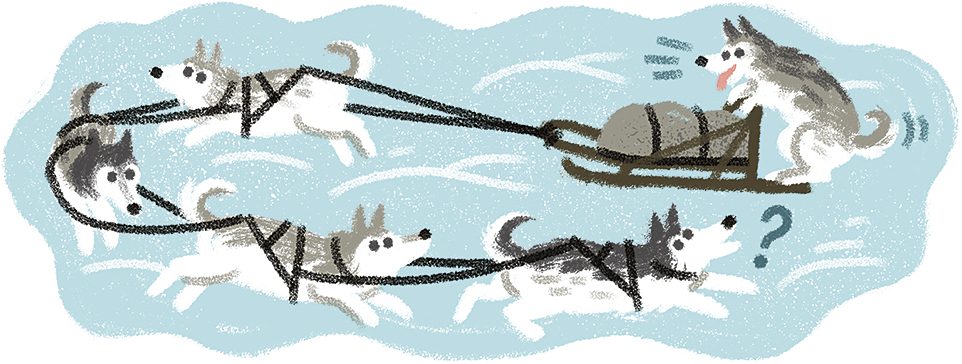
Funny Canadian Jokes From the Yukon
Prospecting for gold—and guffaws!
I’m so sorry if you’re single in March in the Yukon. There’s nothing left; it’s all gone. You go on Yukon Tinder and it just says, “Out of order, check back in May.” —George Maratos, Whitehorse
Ghost in the North
On October 30 last year in Whitehorse, residents were disturbed by a spooky noise ringing throughout town. It sounded like a wail, and no one knew where it was coming from. Locals started speculating on Facebook that it was a “very drunk owl,” or perhaps a “mechanical goose repeatedly honking.” Residents decided to contact Yukon Energy, thinking it might have been coming from the local hydro dam. When staff did a walk-through, they found the problem: a spill gate had been left open, and was the source of the otherworldly noise. Not so scary after all, but at least it got everyone in the mood for Halloween.
New Northerners
We all want to be part of the Yukon. We’re willing to invest the time and the resources. I’ve been growing a beard now for two years, trying to fit in. —Oshea Jephson, Whitehorse
Frisbee for One
A popular summer activity in the Yukon is disc golf, or Frisbee golf. A lot of people think it evolved from regular golf, but I think it evolved from lonely men who got tired of going to the park every day, trying to make friends to play catch with. They were just like, “You know what? I’m gonna figure out a way to play with these discs all by myself. Just me, the trees and my discs.” And when they’re playing, you can actually hear the trees going, “Nobody cares. You’re a grown man playing with discs.” —James Boyle, Whitehorse
These golf jokes are better than a hole-in-one.
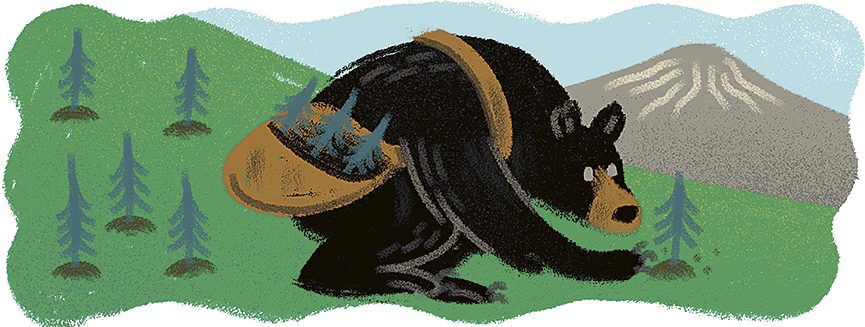
The Greatest Jokes From British Columbia
Welcome to the playful Pacific!
Why do we have so many coins in Canada? We had bills. When I was a kid, we had a $2 bill. It had a bird on it. It was wonderful. There was a $1 bill, too. What happened? Did a pirate make it to the top of the Bank of Canada? —Ivan Decker, Ladner, B.C.
@ScanBC is a Twitter account that tweets out requests for law enforcement heard on police scanners around the province. Here are a few of the more absurd requests they’ve heard:
- June 14, 2020: Fire crews in Maple Ridge are responding to a residence to assist a dog with its head stuck in a couch.
- March 29, 2019: RCMP have requested assistance from the Squamish fire department after they raised their Canadian flag upside down.
- Jan. 23, 2018: Vancouver Police are responding to the area of Renfrew and Hastings for reports of a cougar in a tree. The reported animal was located and found to be a very large raccoon.
Every time Canadian scientists announce they’ve found another dinosaur in B.C., I’m like, “Yeah, that’s when they’re from.” —Jeremy Woodcock, Toronto
At the end of Grade 10, I remember the vice principal at Prince of Wales sat me down and invited me to leave, which, looking back, was just a very Canadian way of kicking me out. —Ryan Reynolds, Vancouver
Enjoying these Canadian jokes? Don’t miss our side-splitting roundup of the funniest Canadian headlines of all time.
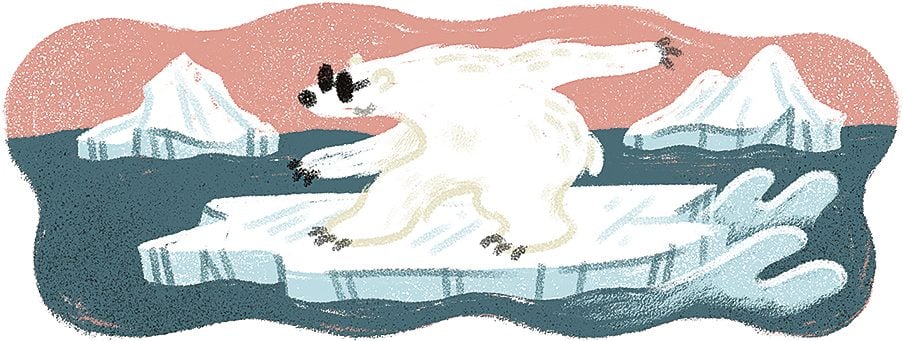
Top Jokes From the Northwest Territories
Plenty of ice and laughs to go around!
I’ve been thinking about telling my jokes as if I were Justin Trudeau, but I don’t think public opinion would really approve—I’d just be pushing my punchlines through like an oil pipeline, but for funnies. —Brad Thom, Fort Providence, N.W.T.
Immigration Reform
Canada should have the easiest immigration policy. Do you want to move to Canada? Okay, we’ll come pick you up. It doesn’t matter where you are in the world; we’re gonna come pick you up at no cost to you. But we’re going to bring you here in January, and we’re going to land the plane in Yellowknife. All those potential immigrants will be excited, thinking we landed at night. Nope, it’s 2 in the afternoon. —Arthur Simeon, Toronto
I was born and raised in Inuvik, N.W.T. Even though I’m from here, though, I can’t start a Ski-Doo, I don’t hunt, and I hate the cold, so I really need this comedy thing to work. —Dez Loreen, Inuvik, N.W.T.
Tourist Traps
Tourism website Spectacular Northwest Territories rounded up a list of the strangest and most dangerous places in the territory. Their names are…a bit on the nose:
- The Smoking Hills
- The Bottomless Lake
- The Peak With No Name
- The Lake That Fell Off a Cliff
- The Rapids of the Drowned
Here are 25 knock-knock jokes that are genuinely funny!
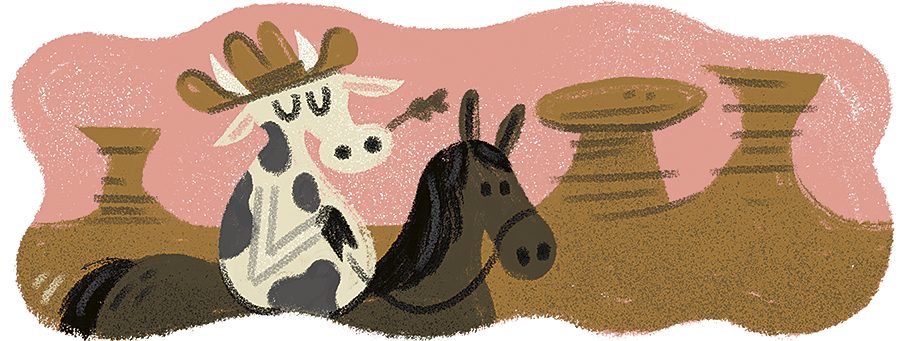
The Best Canadian Jokes From Alberta
The wacky, witty west!
A Calgarian rolled up the rim on his Tim Hortons coffee. He stared in disbelief for a moment, then started yelling, “I’ve won a motor home! I’ve won a motor home!”
A woman working at the counter said, “That’s impossible. The biggest prize is a car.”
“No, it says right here,” he said, handing the cup to the employee: “W I N A B A G E L.” —canadianbucketlist.com
Riveting Radio
CBC can be a little dry at times. The other day I heard this on CBC Radio: “Today on the program we’re talking about lineups. Call us with your fascinating lineup stories.” There’s no such thing! —Gavin Crawford, Taber, Alta.
Signs you’ve been in Alberta too long:
- You think Medicine Hat is “The Windy City”
- You mistake mosquitoes for birds
- Oil has started leaking out of your boots —huffpost.ca
Alberta, the province with the most straight, flat roads and cars stuck in ditches beside them. —reddit.ca
I smoked pot openly in Calgary—because nobody knew what pot was. —Tommy Chong, Calgary
Cultural Differences
I come from High River, Alberta. All my relatives are from big cities all around the world. Sometimes they make fun of me and say, “Oh, Noor, you’re from High River. You know nothing about your culture.” I’m like, “What? I’m from High River. I spend my whole life explaining my culture.” Sometimes it’s not even my own culture. People in High River will ask me, “Hey, Noor, you guys don’t eat meat, right?” And I’m like, “No, that’s actually Hindus.” They’re like, “Oh, what do Hindus believe?” And I’m like, “I don’t know. I’m from High River, too!” —Noor Kidwai, High River, Alta.
Apologizing is huge in Canada’s culture. But not in my culture. Did you know that there isn’t a word for “sorry” in my Cree language? That’s because we didn’t do anything to apologize for. —Howie Miller, Edmonton
For our American guests, let me just say how brave it is of you to join us here, in a country that is such a hostile national security threat. I should let you know, though, if some of you are not careful, we may make you drink your own beer. —Rachel Notley, Edmonton
People think of Canadians as peaceful people, not getting into wars, not having handguns. But our national pastime is this game where we just pummel each other. —Michael J. Fox, Edmonton
Follow this hilarious guide to sound like a hockey expert (even if you’ve never watched a game).

Funny Jokes From Saskatchewan
The landscape may be flat, but not the sense of humour!
I’ve played a lot of leaders, autocratic types. Perhaps it was my Canadian accent. —Leslie Nielsen, Regina
I don’t mind being a symbol, but I don’t want to become a monument. There are monuments all over the Parliament Buildings, and I’ve seen what the pigeons do to them. —Tommy Douglas, Saskatoon (by way of Scotland)
A Saskatchewan farmer decides to retire and move to the Rocky Mountains after living his whole life on the prairies. A few months later, a friend comes to visit.
“What do you think of the mountains?” his friend asks.
“They’re okay,” the farmer says. “But they sure obscure the view.” —upjoke.com
Things you won’t hear in Saskatchewan:
- “Duct tape isn’t going to fix that.”
- “Is the seafood fresh?”
- “I just don’t feel like bingo tonight.” —canadaka.net
Saskatchewan is known for its extreme temperatures. It’s very cold. When I was in elementary school, I had to walk backwards to school so I wouldn’t get frostbite on the front of my face. —Tatiana Maslany, Regina
The Lord said, “Let there be wheat,” and Saskatchewan was born. —Stephen Leacock, Sutton, Ont.
Wearing a mask these past few months has really opened my eyes to how far away my ears are from my nose. —Brent Butt, Tisdale, Sask.
Check out the funniest comedies on Netflix Canada right now.
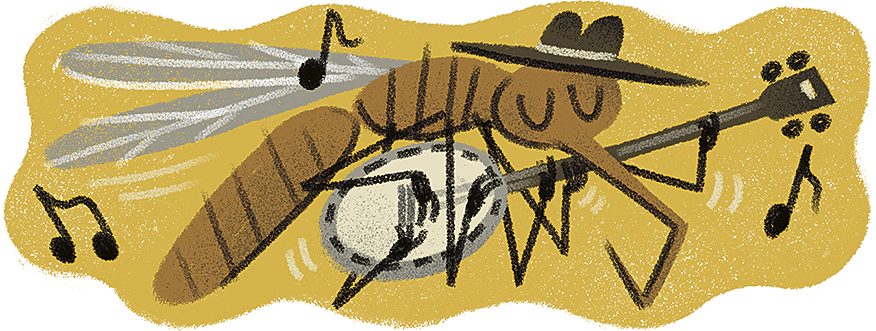
Manitoba’s Best Canadian Jokes
Dry winters and a dry sense of humour!
Fiery Romance
It’s so cold in Winnipeg right now that I’m actually hoping for a heated argument with my wife. —@msilvawpg
Brandon, Man., named one of its local malls the Shoppers Mall, in case people forget what they went there to do. —reddit.ca
In Canada we’re racist; we’re just passive-aggressive about it. If Canadian racism were a person, they would be your best friend. And you’d go over to them in your new jeans like, “How do I look?” And Canadian racism would say something like, “Oh, beauty standards are really hard.” —Aisha Alfa, Winnipeg
Growing up on the prairies, we had only three channels: CBC, a blurry channel, and the French channel. It was called Farmer Vision. —Big Daddy Tazz, Winnipeg
How many of these classic Canadian TV shows do you remember?
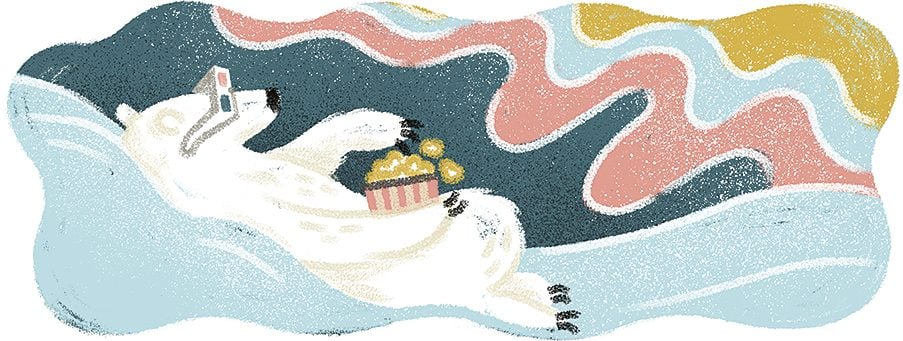
Funny Jokes From Nunavut
Cold weather, warm laughs!
With #NunavutTVShows, Twitter users imagine their favourite series set up north:
- Square Dancing With the Stars —@Alethia_Aggiuq
- No Tree Hill —@geckospots
- The Price is NOT Right —@khumbu2015
- Saved by the Bell 10 GB Data Package —@Nuliayuk
Population Density
Three of five people living in Iqaluit, Nunavut, are actually winter coats hanging on the backs of chairs. —Satirical Twitter account @Stats_Canada
Culture Shock
I have a lot of trouble when I go to the south, because there are just so many rules. I had to pay for parking today—and then I got a ticket because I parked on the sidewalk. But we don’t have sidewalks! —Bibi Bilodeau, Iqaluit
These funny podcasts will have you laughing out loud.
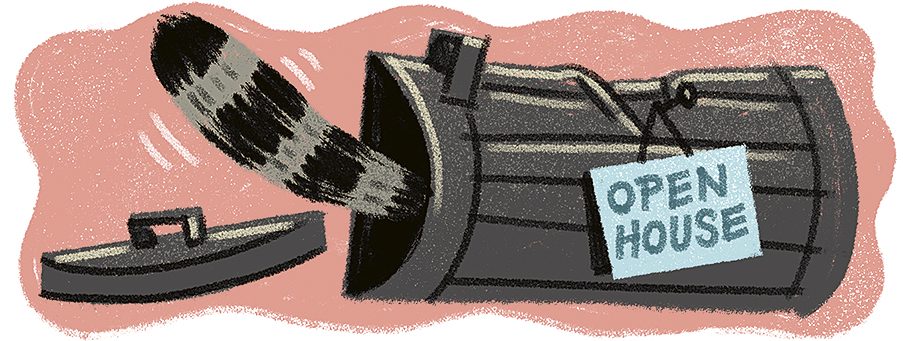
Funny Canadian Jokes From Ontario
Where so much hilarity is “yours to discover”!
Essential Knowledge
Let me tell you about Canadian Heritage Minutes. Most people in most countries feel good about themselves naturally, but we Canadians have a self-esteem issue, so the government feels the need to flood our televisions with commercials about obscure stuff that happened hundreds of years ago that nobody knows about. At the end of the commercials they’re always like, “And that man was Trent Foster Rivers,” and you’re like, “Who?” —Nile Seguin, Ottawa
Toronto housing market: taking your relationship to the next level under financial duress since 2009. —Cassie Cao, Toronto
I’m not afraid to get ugly. I think that comes from my Canadian work ethic. I’m only half-joking. It comes from a place of just wanting to execute the best possible joke in the moment, whatever it takes. What’s the funniest thing I can do? Oh, that’s awful. Okay, that’s it. I’ll do it. Oh my god, I can’t believe I’m doing it. Okay, it’s over. —Samantha Bee, Toronto
The King of Canadian Jokes
Canadian white folks get mad. They say, “Hey, you don’t diss our boiled potatoes. Sometimes we put salt in that water.” —Russell Peters, Toronto
And the Oscar for best actress goes to…Woman Enjoying the Turkey Sausage Breakfast Sandwich in Tim Hortons Commercial. What a performance! —D.J. Demers, Kitchener, Ont.
Cutting Remark
The meanest thing you can say to a guy in Canada? I hope your hockey team loses. —Nour Hadidi, Toronto
Canada and America are closer than friends. We’re more like siblings. We have shared parentage, though we took different paths in our later years. We became the stay-at-home type, and you grew to be a little more rebellious. —Prime Minister Justin Trudeau
National Tradition
I got into hockey as a kid for the same reason all Canadians get into hockey—I wanted my dad to love me. —Dave Hemstad, Thornhill, Ont.
Every Canadian has a complicated relationship with the United States, whereas Americans think of Canada as the place where the weather comes from. —Margaret Atwood, Ottawa
Q: Why do all Canadians live in igloos?
A: We need to keep cool because our prime minister is so hot. —Lilly Singh, Toronto
Canadian Jokes From a Comedy Legend
Canadians, we have our Thanksgiving in October. We have different traditions. We like to stuff the turkey through the beak. We’ll sit around and tell each other what we’re thankful for and then apologize if it feels like bragging. We eat a whole potato because mashing requires too much aggression. And then at the end of dinner, we stand around and sing songs about public health care. —Martin Short, Hamilton, Ont.
How well do you know your Canadianisms? Take our Canadian slang quiz to find out!
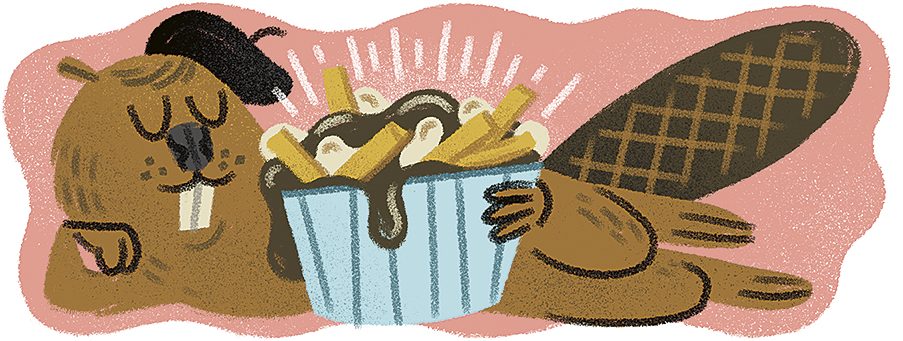
Rib-Ticklers From Quebec
Notoriously funny—in two languages!
Laura Secord is the founding mother of Canada. She made all the chocolates I ate growing up. A lot of people had a poster of David Cassidy over their bed. I had the Laura Secord chocolate chart. —Caroline Rhea, Montreal
Quebec City has more mimes per capita than any other Canadian city. —Satirical Twitter account @Stats_Canada
Bad Joke
The biggest thing that makes me truly embarrassed to be Canadian, and specifically from Quebec, is Just for Laughs Gags. —Zoe Whittall, Toronto
Riddle Me This
What do you call a French Canadian who can speak English? Bilingual.
What do you call an English Canadian who can speak French? A miracle. —reddit.com
Quebec Quirks
We’re on day four of rain in Montreal today. I just saw a guy out walking his goldfish. —David Acer, Montreal
Over the years, people in Montreal have embraced me with open arms. And those who didn’t, well, those are the people who traded me. —P.K. Subban, Toronto
Plus Ça Change…
Only in Montreal can you leave for three months and return to see every traffic cone in the exact same spot. —@brandonprust8
Psst—this is actually the rainiest place in Canada!
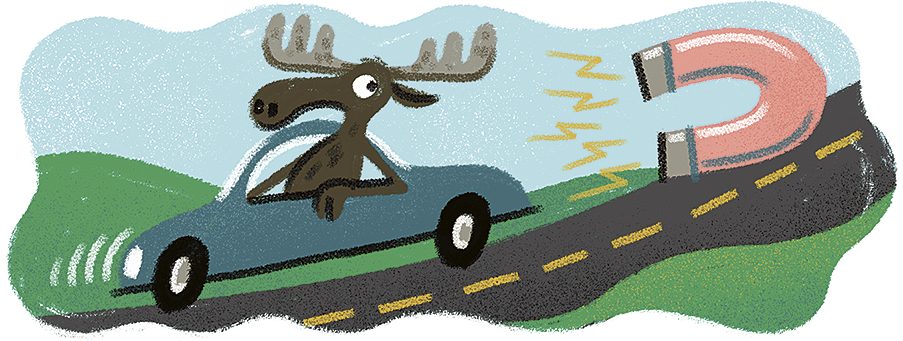
New Brunswick’s Best Canadian Jokes
Land of the lobster, the sea and some very funny people!
Dad: Did I tell you my joke about New Brunswick’s population?
Child: Nope.
Dad: Actually, never mind. It’s getting pretty old. —themanatee.com
Mr. Dress-Up
New Brunswick is like the provincial equivalent of an elderly man in a sweater vest. —reddit.com
Through and Through
They ask me at the border why I don’t take American citizenship. I could still be Canadian, they say. You could have dual citizenship. But I say no, I’m not dual anything. I’m Canadian. There’s a maple leaf in my underwear somewhere. —Donald Sutherland, Saint John, N.B.
Seasons of Change
In New Brunswick, we get four seasons: almost winter, winter, still winter and construction. —reddit.com
We’re thinking of changing our motto: New Brunswick—if you’ve hit Nova Scotia, you’ve gone too far. —Brian Gallant, Shediac, N.B.
How many of these quirky roadside attractions have you spotted in your travels across Canada?
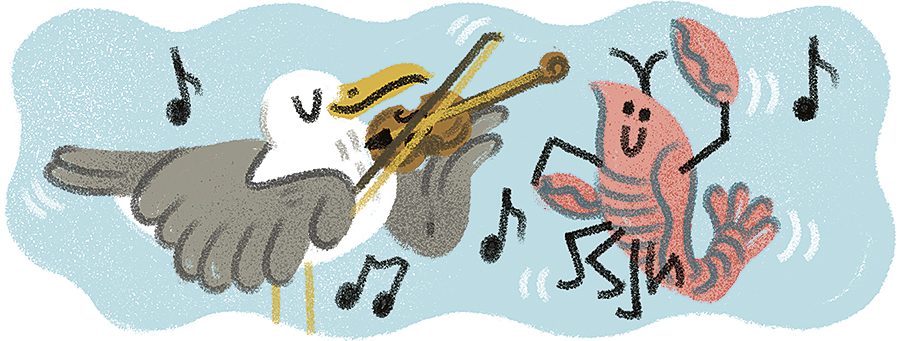
Funny Canadian Jokes From Nova Scotia
High tides and hilarity!
The best thing about my status card is that I can fish wherever, whenever I want. I was in Loblaws the other day and dropped my line in the fish tank. —Janelle Niles, Truro, N.S.
Danger Zone
We have a place in Nova Scotia called Peggy’s Cove, where not long ago a woman went over the edge—and she lived. But this is a pet peeve for me, because they talked about it for weeks after on the radio: “Maybe we need to hire students with little orange vests that say it’s dangerous to go out on the rocks,” they said, “or maybe we need to put more signs up.” Apparently the ocean slamming into the continent and shooting spray 45 feet in the air does not say “danger!” to some people. —Candy Palmater, Halifax
I feel like all Nova Scotia tourism has to say is, “Dude, you can ride your bike, then walk through the woods, then jump in a lake.” —Elliot Page, Halifax
Here are 10 essential experiences on the east coast of Canada.
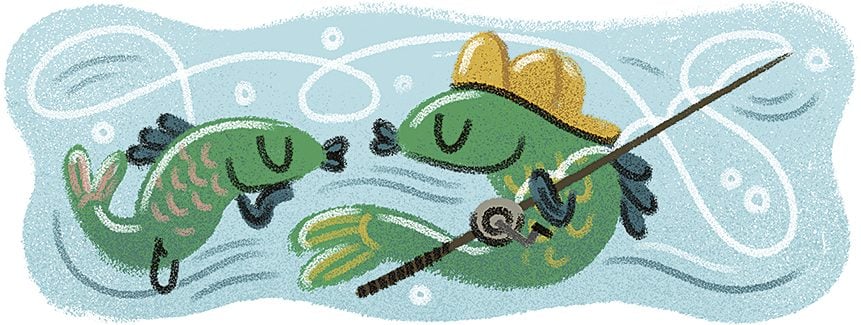
Newfoundland and Labrador’s Funniest Canadian Jokes
Famed for its beautiful landscapes—and side-splitting humour!
Radio just reported that a pregnant woman in labour drove herself to the hospital on a Ski-Doo. I hope they are okay. I’m pretty sure this child will grow up to be the future premier who will lead us to prosperity. —Mark Critch, St. John’s
Legend has it the Macarena originated in Newfoundland when a fisherman got up out of his chair and started anxiously searching his shirt and pants pockets for a pack of smokes. —reddit.com
According to a recent Dominion Institute poll, a majority of Canadians have no idea how Parliament works. Which is fine. We’re a very busy people—we have lives to lead, families to raise. Not to mention we’re all on hold with Rogers. —Rick Mercer, St. John’s
Common Misconception
I’m so sick and tired of Americans misunderstanding Canadians: “Aww, isn’t that cute. He’s from Canada. Hey, Bob! They just got electricity up there.” There are so many things they don’t know about us. Like, first of all, we’ve had electricity since the early ’80s. —Shaun Majumder, Burlington, N.L.
Apocalypse Later
The world will end at midnight… Twelve-thirty, Newfoundland. —reddit.com
“[Newfoundlanders are like] a genetic pool the size of a pudding bowl. So I always think that the first two who came were really funny, and it just went on from there.” —Mary Walsh, St. John’s
Canadian tweens spend 81 percent of geography class laughing at names of towns in Newfoundland. —Satirical Twitter account @Stats_Canada
Come from away? Here are 12 common Newfoundland sayings, decoded!
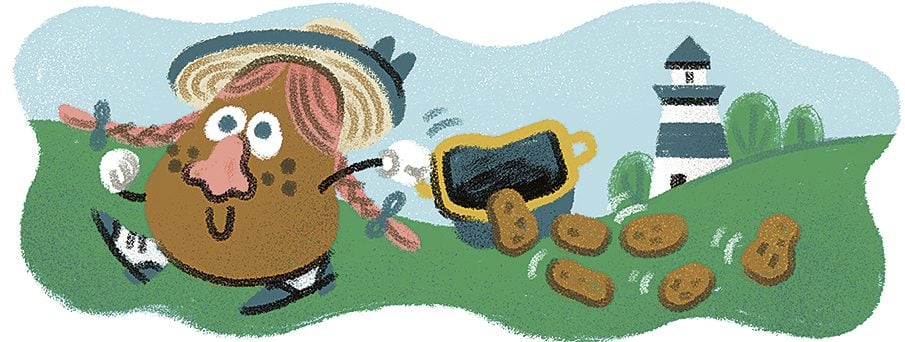
Top Canadian Jokes From Prince Edward Island
The smallest province with the largest laughs!
Celebrating History
I’m from Charlottetown, where the country was formed in a blurry stupor by the Fathers of Confederation. You know, Charlottetown is so proud of its place in our history that every Thursday, Friday and Saturday night there are still re-enactments of the drinking that went on during that fateful gathering. —Jonathan Torrens, Charlottetown
Did you ever hear the joke about the woman who moved to P.E.I. when she was two years old? She lived her whole life on the Island and died here on her 90th birthday. But her obituary still read, “Woman from away died peacefully in her home.” —Teresa Wright, Charlottetown
You know you’re in P.E.I. when there are seven empty cars running in the parking lot of your local Canadian Tire at all times. —canadaka.net
Know Thyself
Writer Ivy Knight’s book You Know You’re an Islander When… offers an insider-joke tome for Prince Edward Islanders. Here are some highlights:
- You get excited when you hear P.E.I. mentioned on any news outlet other than Compass
- When you see the sign for Vogue Optical, you automatically sing in your head, “Your second pair is free”
- You know the difference between “out west” and “up west”
- Crapaud: to others, it’s a joke; to you, it’s home
If these Canadian jokes tickled your funny bone, don’t miss our roundup of the funniest town names across Canada.

I was born and raised in Metepenagiag (Red Bank, New Brunswick), and have lived here all my life, except for a few years when I left to attend university.
It’s home to the Metepenagiag Heritage Park, which houses all the artifacts that were found in the Augustine Mound and the Oxbow Site, two National Historic sites. It was through oral tradition that these two sites were discovered by Elder Joseph Augustine (my father) in the early 1970s.

While on hunting excursions as a young man of 12 with his father, and always stopping near the Mound to rest and have their lunch on an old caribou trail, my grandfather told him that this was where our ancestors had ceremonies for their deceased loved ones. It was only years later when my father was in his 60s that his memory would be jarred by a magazine article about Native burial mounds in the United States. His curiosity peaked, my father went to investigate and discovered that the mound was indeed a burial mound. This happened at a time when a nearby gravel pit was being dug up. His discovery halted the digging of the gravel pit and the rest is history. The resulting archeological digs have revived our Mi’kmaq culture, and allow us to lay claim to the fact that Metepenagiag is the oldest continually occupied village in New Brunswick, dating back more than 3,000 years!

Metepenagiag Today
The Metepenagiag Pow Wow, Trout Derby and Washer Toss Tournament are just a few of the many family-oriented events that take place here annually.
Needless to say, I am so very proud of my heritage and community. Metepenagiag is situated along the Miramichi River, which is world renowned for its salmon fishery and it’s a photographer’s dream, thanks to its beautiful scenery during all seasons. Photography is my hobby and I could not ask for a more beautiful backdrop to take photos.
Next, discover the fascinating story of St Martins, New Brunswick.

I live in the tiny, picturesque village of St. Martins, New Brunswick, but I’m not from here, originally. I’m “CFA” or “Come from away.” I was born and raised in London, Ontario, a good-size city. So you can imagine the culture shock at moving to such a small place. The population of St. Martins is under 300 year-round residents. But what it lacks in size, it more than makes up for in warm Maritime welcome and stunning scenery.
The Story of St. Martins, New Brunswick
St. Martins is located about 50 kilometres east of Saint John, on the Bay of Fundy coast. Artifacts found in the area prove there were people here as early as 10,000 years ago. The Mi’kmaq people named this place “Quaco” and folks generally translate that as meaning “haunt of the hooded seal.”
The first Europeans here in the 1600s were the French. The area went back and forth between the British and French several times. Mathias Moran was one of the original settlers of St. Martins. He arrived in October 1783 after the war ended and members of the King’s Orange Rangers, who had fought in the War of Independence but were loyal to the British king (hence the name “Loyalist”) were granted land in St. Martins, and a permanent settlement began.

Most of the soldiers had been farmers before enlisting, but in St. Martins they discovered forests growing right up to the high tide mark. The trees growing here were perfect for building wooden sailing ships, and the sloping beaches acted as natural dry docks. Thus, a ship-building industry was born, and continued for 100 years. There were approximately 500 sailing ships built in and around St. Martins. They travelled the world and made quite a reputation for the village. At that time, since water was the only way to get here, St. Martins was self-sufficient with its own banks, churches, schools, hotels, a dentist, a doctor, all types of stores, saloons, restaurants and even an undertaker! The population never grew to more than 3,000 residents. Today, the Quaco Museum on Main Street is an excellent place to discover the village’s shipbuilding history.
As sailing ships were replaced by steam engine vessels, St. Martins turned to the forest for its livelihood. Then, since there was now a road to Saint John, many travelled it to work in industries there and many still do today.
St. Martins Today
What is left here now is a quaint seaside village, with restaurants, campgrounds, general store, and lots of cabins and cottages to rent. Several of the historic homes have been turned into country inns, which all have their own story to tell. Fresh lobster and scallops are available in-season from fishermen on the wharf. Adventures await as well: kayaking and hiking with guides can be booked locally.

Did I mention the scenery? It is spectacular! Not grand like the Rockies, but unique in its own way. The Bay of Fundy is known for the highest tides in the world, which can be seen in St. Martins, and at low tide, you can walk on the ocean floor. The sea caves at the eastern end of the village are part of the Stonehammer UNESCO Global Geopark. The United Nations has also designated the area as a Biosphere Reserve. It’s truly a special place on Earth. The red sandstone cliffs are from the Triassic period, being about 230 million years old. At low tide, you can walk out and explore the caves, and at high tide, you can kayak into them!
Read up on the natural wonders of Canada.

The high tides also affect the harbour. Fishermen can only get their boats in or out for about two hours on either side of high tide. No nine-to-five for them! Also at the harbour, you will find not one, but two covered bridges. It’s the only place I know of in Canada where you can get a photograph of two covered bridges in the same shot. Recently, one of the bridges was deemed unsafe, so a bailey bridge has been built to go around it, but it still makes for a great photo-op. Since vehicular traffic is no longer going through the bridge (it’s still safe to walk or bike through), it has been used for other things. Last year, for instance, the village Christmas tree was put on display there—even a couple of weddings have taken place inside the bridge. The harbour also boasts the village of St. Martins Tourist Information Centre, which is a replica of the original Quaco Head Lighthouse. The current lighthouse is visible across Quaco Bay.
Check out more beautiful lighthouses across Canada.

Pristine Wilderness Awaits
St. Martins is also the gateway to the Fundy Trail—a 2,559-hectare park featuring a low-speed driving parkway that takes you through some of the last undeveloped shoreline on the eastern seaboard. There is a hiking path as well, which is part of the Fundy Footpath. It has been named one of the top ten hiking trails in the world. Many parking lots offer time to enjoy spectacular vistas. Some are wheelchair accessible. Picnic tables encourage more time to enjoy the views. There is an interpretive centre at Big Salmon River, which offers washrooms, gift shop and a short film on the area and its history. A short walk from there is the cable suspension bridge over the river, where you can look down into the pristine water and watch for salmon. The parkway is open to drive from St. Martins to Sussex, a town inland from the bay. In two or three years, the road will be expanded, so you will be able to drive the parkway all the way to Fundy National Park.

Wildlife is plentiful here, too. Whitetail deer are a nuisance to some. Moose, bears, foxes and many migrating birds are here for those who know where to look. A pair of bald eagles nest in the marsh. Harbour seals and occasionally harbour porpoises can be seen in the water.
These are only some of the many wonderful things I love about St. Martins, New Brunswick—my adopted home. The best way to see all these fabulous sights is to come and visit. We’d love to see you one day.
Discover more essential experiences on the east coast of Canada.
On a late January evening in 2008, Rachel Lapierre bought a $4 scratch ticket while picking up groceries. After an exhausting day cutting sugar maples in the Laurentian Mountains of Quebec, she needed something to lift her spirits. Her sugarshack hobby was meant to be fun, but the 46-year-old mother of four was wearing herself thin as a nearly full-time emergency-room nurse and part-time volunteer aid-worker.
For years, Lapierre had done humanitarian work overseas for organizations such as the France-based Médecins du Monde, and she longed to be able to one day quit her nursing job and focus on the volunteer work she found most fulfilling. She vowed to herself that if she ever won the lottery, that’s what she would do.
Lapierre went home and scratched her ticket, revealing three sunny faces. Not sure what they meant, she took it to a corner store, where the ticket-checking machine went berserk but didn’t reveal the prize. She tucked the ticket in her bra for safekeeping. The next day, the Loto-Quebec office informed her that she had won a lump sum of $675,000 or $1,000 a week for life. She chose the latter. “I know myself,” she says. “The lump sum would have melted like snow in the sun.”
Staying true to her word, Lapierre quit her nursing job and dedicated her life to helping others through her passion project, Le Book Humanitaire, which has since become a registered charity.
Le Book, as Lapierre, now 62, affectionately calls it, began as a simple list of good deeds she jotted down in a black-and-white wire-coiled notebook. She had been using it to keep track of what she had done to help those living in the small communities around her. To her, the deeds were just small acts of kindness—buying clothes for a family of newly arrived immigrants, delivering a meal to an isolated senior or giving medical attention to someone living on the streets—that anyone else might have done. But word started spreading, her phone began ringing and a Facebook page she created for the project became an efficient way to field requests from those in need and those who wanted to help.
Sixteen years later, Le Book Humanitaire now has a team of 80 volunteers. The non-profit provides local emergency support, homeless and medical outreach, food delivery for seniors and a community fridge. Its kitchen volunteers make about 500 meals a day, with all food donated from local restaurants, hospitals and schools.
The book itself? It has since been replaced by dozens more, representing millions of deeds. In 2022 alone, the organization carried out nearly 450,000 acts of service.
“Le Book has had an immense impact on me and on many vulnerable people,” says Martyne, 52. The former special-education technician, who asked that only her first name be used, suffers from long Covid and has been unable to work since getting sick in March 2020.
She recently saved enough to move out of a rooming house and into an apartment with a roommate, but she can’t afford to furnish it. Le Book provided a comfortable recliner so she could function without spending her days in bed. And because debilitating fatigue also makes it impossible for her to cook for herself, Martyne is now on Le Book’s food delivery route. “With courtesy and no judgment, Le Book helps us get what we need,” she says.
“When you do a good deed, it has a butterfly effect,” says Lapierre. “One good deed can affect 10 people. So if we all do a good deed? That can save the world.”
Check out more good news stories that will restore your faith in humanity.
It was many years before I went back to my hometown of Swalwell, Alberta. My youngest daughter drove me, along with my great-grandson. My childhood home had become a tumbledown shack. The windows were gone, the porch half broken up. The chicken house was only a pile of lumber, the bushes were dying and the lilac hedge all gone. Only my tree was left. How overwhelmingly sad it was to have my daughter and great-grandson see my old home like that!
I Won’t Remember It That Way
I never went back again. I won’t remember it that way. I will remember the high lilac hedge full of purple blossoms in the spring, the sun porch covered with grape vines, Mom’s huge vegetable garden, my Dad’s old chopping block, and, out back, my make-believe roads and bridges, where I travelled in my dreams. I’ll keep only the happy memories. As the old song says, “When that tumbledown shack by the railroad track” was a home. These are a few of my memories.

Growing Up in Swalwell, Alberta
My first home was a small three-room cottage in Swalwell, Alberta. I was born in 1920 and for 18 years, my home was alive with love, laughter and colour from the surrounding plants and trees. Everyone called me Josephine.
Our kitchen was the hub of the house. Dominating the room was a large black stove that was kept burning all day. My mother’s cooking filled the house with wonderful smells. Flat irons always sat on the stove top ready for ironing, and, in the wintertime, these were then wrapped in towels to warm the foot of the beds. We did not have running water; it was hauled from the village pump blocks away.
A trapdoor with a ladder led down to the fruit cellar. There were no real walls or floor down there, just hard-packed dirt. It was very cold in the winter, and cool in the summer. My mother’s canning was stacked on shelves. On the floor were root vegetables all packed in sand. Remember, in those days, we did not have electricity, so no freezer or fridge. One day in the summer, my mother went down into the cellar and stepped on a lizard. She took a deep breath and took another step towards the shelf where she wanted to get a jar of peaches, when she stepped on another lizard. That was enough for her. She quickly came up the ladder and we did without peaches that day. Afterwards, I was the one to go down into the cellar for supplies. And—horrors—I caught the lizards and fed them to my chickens.
My bed was either in the front room or in an enclosed porch at the front of the house. Early in the morning, I would lie listening to the meadowlarks singing and the grasshoppers chirping. I felt happy and loved.

Childhood Delights
I learned to stook with my dad on our small 40-acre farm. A machine would cut the wheat and tie it in bundles. It was those bundles that we stooked; eight bundles made a stook. There is nothing more picturesque than a field of stooks.
My mother was a good seamstress. I would pick out a picture from the Eaton’s catalogue, which was a must in a country home, and she would make a pattern out of newspaper. Within days, I had a new outfit.
I attended a one-room school till Grade 8. I have no recollection of what happened in the classroom, yet I still remember recess time. When we played Pom Pom Pullaway, two older boys would take my hands and run with me—I was never caught.
Gas and oil lamps lit our home until I was eight years old. After we got electricity, I remember feeling excited as I turned on the light switch. We then bought a radio. I contributed money that I earned from delivering eggs and from picking potato bugs off the potato plants, as well as collecting gopher tails for five cents each—imagine!
In good weather, all the village kids played Run Sheep Run or Scrub. I still remember that I owned the only softball in the village.
In winter, we would flood a bit of ground and make our own curling sheet, using frozen tin cans as stones. Curling was the social hub of every village. Now I watch curling on TV and was lucky enough to go to the Gold Medal game at the Vancouver Olympics.
I can still remember walking home at night and looking up at the sky to spot the Milky Way, both the Big and Little Dipper as well as millions of stars. We don’t see that in the city now. Soon our little home would appear in front of me, bright and welcoming. The snow would crunch under my feet as I got closer and my mother would always be up waiting for me with a cup of cocoa.

We moved to Calgary when I was 18, and I became known as Jo. Since then, I have lived in five different provinces as well as Germany for a time. I am now 98 and once again living in a three-room place, one of which is a bathroom—something my first home did not have.
I am now called Jojo for my last chapter, but I will never forget the town that called me Josephine.
Next, check out an incredible essay that serves as a time-capsule of life in the Prairies during the Great Depression.

I was born and still live in Ste.-Anne-de-Beaupré, on the north shore of the St. Lawrence River, a half-hour east of Quebec City. My family, the Blouins, own a very unique place known as the Cyclorama of Jerusalem, a circular wooden building that was erected in 1895 near the local wharf and a block from the world-famous Ste. Anne’s Basilica. The building houses a fascinating 360-degree panoramic painting, with a 3-D perspective, of ancient Jerusalem during the era of Christ’s Crucifixion. This immersive display became extremely popular with tourists and churchgoers over the years. The property has remained closed since 2018, however, as the old building is in need of extensive renovation and repair.
In 2019, the structure and the painting were classified as a Heritage Monument by the government of Quebec, but unfortunately, a budget to aid in the building’s restoration was not provided. As the current president and general manager, my intent is to ensure that our private museum will be preserved for future generations of visitors. The question is: how?

The Cyclorama of Jerusalem: A History
Our cyclorama, the largest in North America, measures 14 metres high and 110 metres long. It was first shown at a Montreal fair in 1889 and went on display in a rotunda at Ste. Catherine and St. Urbain in downtown, now the site of Place des Arts). In 1895, the canvas was rolled up and the rotunda was dismantled of transport by boat or train to our small locality.

At that time, the owners were Albina Laurendeau and Ubald Plourde, who were neighbours and employers of my grandfather Georges-Henri Blouin. He was such a loyal worker that the couple chose him to be the sole owner of the Cyclorama of Jerusalem upon their deaths. So, grandfather Georges-Henri and grandmother Blanche-Irène (who was a photographer) raised their three sons in the midst of this biblical decor. As young boys, their playtime included helping to dust the enormous painting and welcoming worldwide visitors.
My father, Guy Blouin, now 93 years old, loved and took care of our cyclorama all of his life—and he still does. A humble and devoted man, he goes there every day to clean, inspect and do repairs.

Of course, the next generation helped out, too—myself, my brother and sister, as well as Uncle Roch’s six children. We are all proud kids who grew up in this unique environment. I recall thousands of tourists visiting every year. It was fantastic!

A Landmark in Transition
What I like best is that anywhere you look, you are treated to bright and vibrant colours. To me, the “Arab Tent” has been our visitors’ favourite scene, thanks to the attention to detail in its colourful textiles and the many people, and camels, shown going about their day in Jerusalem. Incredibly, the scene extends 80 kilometres into the distance.
Cycloramas such as ours were a form of visual entertainment decades before movies came to big screens in theatres, and usually depicted historic and geographical events. There is a cyclorama in Belgium, for example, that places the viewer in the middle of the Battle of Waterloo, which took place just south of Brussels on June 18, 1815. The illusion is so perfect, you feel as if you are part of this dramatic moment in history.
The Cyclorama of Jerusalem was created in Munich from 1878 to 1882 by German artist Bruno Piglhein. At some point an American, Dr. Ernest Pierpont, joined the project with a group of artists from Paris, London and Chicago, who later branched off in the United States to handle the main theme (the Crucifixion), draw camels and horses, and paint landscapes. Happily, the project was completed in time for the 1889 exhibition in Montreal.
In 1957, a portion of the building ’s roof collapsed, causing damage to the canvas and ruining a large portion of the boutique’s inventory. Insurance paid for the painting’s restoration, but my father had to work very hard to secure financing to save the building itself—which, thankfully, he did.

The Cyclorama’s Future
My role now is to ensure that the Cyclorama of Jerusalem broadens its fame and attracts the interest of potential new owners. To help raise international awareness, I attended the annual International Panorama Council Conference in Luxembourg last September and came home quite encouraged.
We do wish to retire some day, however, so the family business needs new blood to survive. Our small team now includes local artist Annie Lévesque, who is active in cultural development, and has quickly become my “right-hand man” as we determine how best to transfer this nearly 130-year-old institution to a new owner. In a way, I am launching an SOS to our town’s namesake, Saint Anne herself. I hope she will hear us—the Blouins, her next-door neighbours—and relay our message to the world!
Thank you to Hélène Jasmin of Saint-Polycarpe, Quebec, for suggesting this story and following up with the Blouin family. Click here for more info or to help the cause.
Now that you know the incredible story of the Cyclorama of Jerusalem, check out 10 historical landmarks every Canadian needs to visit.
It might be in yoga class when you first feel it—when did downward dog start getting so hard on the wrists? Or it could be at your weekly squash or tennis game that you notice your knees screaming back at you whenever you pivot. Chances are, it’s arthritis, which isn’t just an “old-people” problem: It usually kicks in between the ages of 40 and 60.
By far the most common type of arthritis is osteoarthritis. It’s usually the result of decades of physical activity that wears down the cartilage in our joints. That’s the rubbery, frictionless tissue that acts as a shock-absorber between bones. After years of wear and tear, or an injury such as a fracture or dislocation, that cushion can harden and fray like a dried-out rubber band, causing the entire joint to become inflamed and painful (the word arthritis comes from the Greek arthro, which means “joint,” and itis, which means “inflammation”).
Osteoarthritis, or OA, is diagnosed in two-thirds of people who experience any sort of joint pain. According to a national survey done in 2022 by the University of Michigan, 30 percent of Americans between the ages of 50 and 80 report doctor-diagnosed OA (eight percent of respondents were diagnosed with rheumatoid arthritis, which is an autoimmune disease). Women are more likely to suffer from it than men, for reasons that remain unclear. The World Health Organization estimates that 528 million people worldwide have OA, and an increase over the next decade is projected as the population ages.
The joints that bear the brunt of OA are most often the knees, knuckles, base of the thumb, lower back and hips. Sufferers might notice swelling or even feel a grating sensation in the joints, and some people experience aching that’s deep enough to wake them up at night. Stiffness is common, particularly in the morning, and things like opening a jar or bending down aren’t as easy as they used to be.
Fortunately, relief for arthritis pain in the form of some innovative solutions may be on the way.
Finding relief for arthritis pain
Maintaining a healthy body weight helps, since it’ll mean less load on your joints. Keeping extra weight off also minimizes your risk of getting OA in the first place. Exercise is often the first treatment doctors suggest. If you’re not already active, low-impact options like walking, biking or swimming are good ways to start moving more. Exercise helps ward off stiffness and keeps muscles supple around the joint.
Yoga might bring relief for arthritis pain, too, according to the Arthritis Foundation. Experts there also recommend seeing a physiotherapist, who can teach you some movements to improve mobility and increase your strength to support the affected joints. But most people find that these things don’t eliminate pain, or they help only if symptoms are mild to moderate.
Find out if chair yoga is right for you.

Over-the-counter pain relievers, such as ibuprofen and naproxen, relieve pain and stiffness, but aren’t a long-term solution because they can irritate the stomach. Doctors might prescribe an oral corticosteroid such as prednisone, but it can cause side effects such as weight gain, mood swings and high blood pressure, so it should be used only briefly.
For some, corticosteroid injections can offer temporary relief for arthritis pain, but two recent studies, one from the University of California, San Francisco, and the other from Rosalind Franklin University of Medicine and Science in Chicago, found that they might actually lead to a progression of OA.
Doctors may also recommend hyaluronic acid, which is injected into the joint to act as a viscous fluid replacement for the cartilage, like oil in a car engine. But it’s no cure. While the injection may temporarily relieve pain and even slow down progression of the disease, according to a landmark study published in the BMJ last year, it provides little to no long-term benefit for most patients.
Another injectable treatment, which has been used since the 1980s to treat torn tendons and joint injuries, is platelet-rich plasma. Your own blood is removed, enriched with platelets and then injected. Some athletes have tried it for sports injuries—notably, Tiger Woods. But it appears to have mixed success, according to the American Journal of Sports Medicine, and much more research is needed to find out how to make it work better.
So far, the only truly effective osteoarthritis treatment is a complete joint switch-out, whether it’s the replacement of knuckles, knees or hips. Millions of people around the world undergo the surgery, but the catch is that the new joints last only so long—15 to 20 years—so many doctors don’t recommend it for anyone who is under the age of 60.
Combined treatments
Ben Bebenroth, a Cleveland, Ohio-based farm-to-table chef, didn’t have much relief from arthritis pain until he underwent knee-replacement surgery. His osteoarthritis started when he was 15, after he injured his left knee in a snowboarding accident. For a long time, he self-medicated with alcohol and over-the-counter painkillers so he could keep up with his busy lifestyle and stay active. “I dealt with my pain that way for 25 years,” says the now 45-year-old, a former Marine.
Aside from exercising and keeping his weight in check, he tried hyaluronic acid injections, steroid injections and even three arthroscopic, or “keyhole,” surgeries (sometimes recommended in cases where the OA was caused by injury). Nothing worked. Finally, Bebenroth underwent a total knee replacement at the unusually young age of 40. “When you reach the point of bone-on-bone contact, you just grin and bear it until you can’t anymore,” he explains.
Bebenroth knows it’s inevitable that he’ll develop some degree of arthritis in his right knee—that’s what happens if one joint takes the brunt of wear and tear when the injured one is long favoured—but in the meantime the surgery has allowed him to return with new enthusiasm to his work, and to the hiking and snowboarding he loves.

He also avoids all sugar and alcohol, and supplements his diet with nutrient-dense, anti-inflammatory foods like turmeric and ginger from his organic farm, where he grows ingredients he uses at his restaurant. Featuring many foods from the Mediterranean diet—fish, nuts, beans, lean meats, lots of leafy vegetables—an anti-inflammatory diet is well established as being joint friendly.
“Diet has been critical,” Bebenroth says. “The fewer inflammatory foods I eat, the better I feel.” Stretching, meditation and movement have also helped. “This way of living helps me move away from being in a reactive state, when you’re angry at your pain and end up soothing yourself with a sweet treat.”
Here’s what can happen when you start meditating every day.
New hope for OA sufferers
Given how many people suffer from OA around the world, a lot of researchers are working on solutions—and are at last finding some. At Duke University, for example, researchers are planning to launch a clinical trial this year for a knee gel made of water-absorbing polymers that simulates cartilage.
Using stem cells derived from our own bodies to treat arthritis also shows promise. In 2018, researchers at Stanford University School of Medicine managed to isolate skeletal stem-cells in adult humans, a significant step toward regenerating cartilage.
“We thought skeletal stem cells existed for some time, but we weren’t sure,” says Charles Chan, an assistant professor of surgery at Stanford. “We used a technique called FACS, which is sort of like a jelly bean sorter. It allows us to separate types of cells based on the protein on their surface. There were around 100 types.”
To understand which was which, the researchers transplanted the cells into mice to see what they differentiated into. Some turned into bone.
Chan and his colleagues then discovered that they could foster the growth of new cartilage with these cells by sending them a new set of instructions. In their experiments, they created a microfracture by drilling a tiny hole in bone tissue. “This provokes skeletal stem cells to gush up in a blood clot,” Chan explains. “Left on its own, this would turn into scar tissue, or what we call fibrocartilage. It acts like a Band-Aid, holding everything in place. But it’s not as bouncy or slippery as regenerated cartilage.”
What if, the team wondered, they somehow changed the chemical signalling that was telling the cells what to do? “We thought maybe we could interrupt the cells as they developed into cartilage on their way to becoming bone—coax them to finish their work at the cartilage stage,” explains Chan. The chemicals the team used to try this have prior approval and safety profiles from the FDA for other applications, such as Avastin for various cancers.

It worked. The result of their experiment in laboratory mice, and then in human joint tissue infused into mice, “is that you get a nice piece of cartilage,” Chan says. “It’s durable. And the subjects get dramatic improvements in their pain and their movement.”
The team is now raising funds for human clinical trials, where they plan to start with osteoarthritis in patients’ thumbs and fingers. If all goes well, they may be able to bring an injectable medication to market that doesn’t just provide relief for arthritis pain but actually cures the disease.
Read up on how stem cell therapy is saving lives.
Innovations in relieving arthritis pain
Meanwhile, the Melbourne Stem Cell Research Centre in Australia has conducted a number of trials on the use of adipose- (fat-) derived stem cells in the treatment of osteoarthritis. Similar experiments are taking place in Italy and Ireland. The idea is to work with our mesenchymal stem cells (MSCs), which are important for making and repairing cartilage and bone. They seem to have multiple positive effects, including calming inflammation set off by the body’s immune response and reducing nerve pain.
“Patients undergo a mini-liposuction,” says principal investigator Julien Freitag, a Melbourne-based musculoskeletal specialist. Then, the fat tissue is transferred to an accredited laboratory, where the MSCs are expanded and injected into a patient’s joint; a second injection is given six months later.
While it remains somewhat unclear exactly how MSCs weave their healing magic, says Freitag, “our clinical research conducted over the last nine years has been incredibly promising.” That research, which includes a randomized controlled trial and data collected from actual cases, shows pain reduction and improvements in joint function. “We are seeing significant benefit to patients, whether they have mild, moderate or severe osteoarthritis.”
Given that other research centres are also deep into treatment research, a government-approved breakthrough therapy will probably emerge in the next 10 to 15 years. If it proves to be as safe and effective as it has been in research so far, millions of sidelined athletes will be able to get back out onto the field, or just enjoy everyday life more.
Next, find out if cherry juice really provides relief for arthritis pain.
